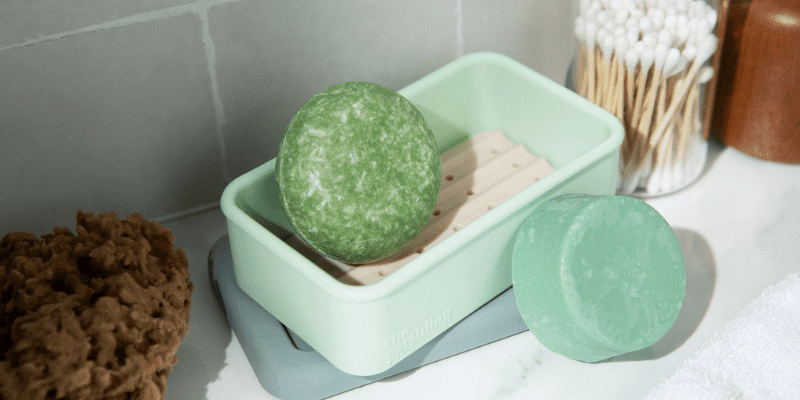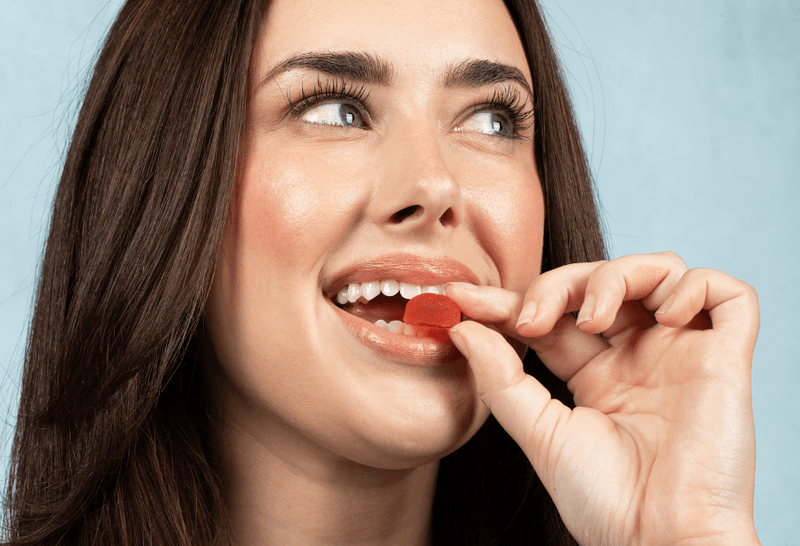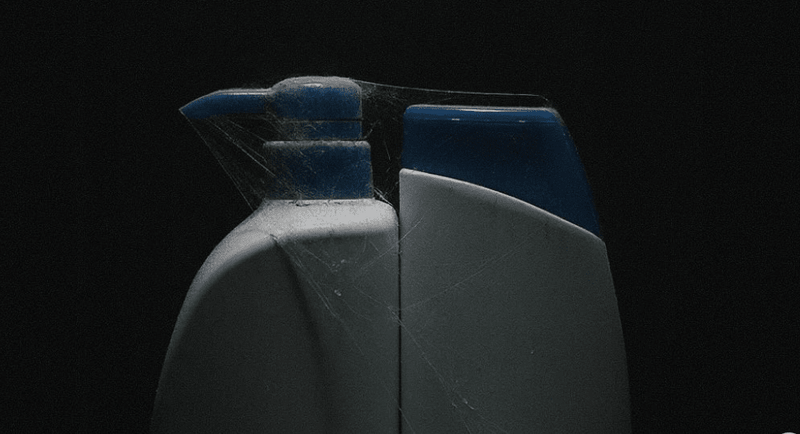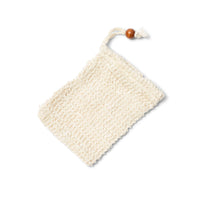
In recent years, shampoo bars have made a big splash in the beauty industry, quickly becoming a sustainable alternative to traditional liquid shampoos. But for many, these compact bars still raise questions. Do they clean as well as liquid shampoo? How do they lather if there’s no liquid involved? And can they really deliver the same results without stripping your hair of its natural oils?
The Science of Surfactants and Lathering in Shampoo Bars
At the heart of shampoo bars are surfactants, the ingredients responsible for cleansing. Surfactants are molecules that have two distinct parts: a hydrophobic (water-hating) tail and a hydrophilic (water-loving) head. When you apply a shampoo bar to wet hair, the surfactants attach to both the oils and dirt in your hair and scalp (thanks to the hydrophobic tail) and the water (thanks to the hydrophilic head). This allows the oils and dirt to be lifted from your scalp and hair and rinsed away, leaving your hair clean.
But what about the lather? Many people associate a rich lather with effective cleaning, but the lather itself isn’t what cleans your hair—it’s the surfactants at work. While liquid shampoos often require more water and chemicals to create foam, shampoo bars use a more concentrated formula. The lather produced by a shampoo bar might be less foamy than what you’re used to, but that doesn’t mean it’s not working. The key is how the surfactants break down oils and dirt, not just the amount of foam they produce.
How Shampoo Bars Clean Without Stripping Natural Oils
One of the biggest concerns people have when switching to a shampoo bar is whether it will leave their hair feeling dry or stripped of its natural oils. Traditional shampoos often contain harsh detergents like sodium lauryl sulfate (SLS) or sodium chloride, which are effective at removing oil and dirt—but they can also strip the scalp and hair of natural oils, leading to dryness and irritation.
Shampoo bars, on the other hand, are typically made with gentler surfactants, natural oils, and conditioning ingredients that help cleanse without over-drying. Many shampoo bars are formulated with oils like coconut oil, shea butter, or jojoba oil, which help nourish the hair while cleansing. These natural ingredients hydrate and protect the hair cuticle, leaving your hair feeling soft, smooth, and well-moisturized.
Additionally, shampoo bars are usually pH-balanced to be more compatible with the natural pH of your scalp and hair. This helps maintain the protective moisture barrier of the scalp and prevents the harsh stripping effects that can occur with traditional shampoos.
Dispelling the Myths: “Shampoo Bars Don’t Lather” or “Don’t Clean Well”
There are a few common myths that tend to circle around shampoo bars, often from people who have tried them briefly but haven’t fully understood how they work.
Myth 1: Shampoo bars don’t lather.
While it’s true that shampoo bars generally don’t create the same bubbly foam as liquid shampoos, they still lather, just in a different way. The lather might be more subtle or less abundant, but that doesn’t mean it’s not doing its job. The important part is that the surfactants in the bar are still working to break down oils and dirt, even if the foam is lighter. And many people find that the milder lather actually makes their hair feel cleaner and less weighed down with product buildup.
Myth 2: Shampoo bars don’t clean well.
Some people fear that because shampoo bars are more concentrated and come in solid form, they won’t clean as effectively as traditional liquid shampoos. This couldn’t be further from the truth. Shampoo bars are often made with higher-quality, natural ingredients, and they are just as, if not more, effective at cleansing the hair. The surfactants in shampoo bars are designed to lift oils, dirt, and grime from the scalp and hair just like liquid shampoo—only without the added fillers and water.
It’s important to remember that when you switch to shampoo bars, your hair may go through an adjustment period. If you’ve been using a lot of liquid shampoos with heavy detergents or silicones, your hair might initially feel different as it sheds buildup. However, over time, many people find that their hair feels healthier, more natural, and less reliant on constant product use.
Why Choose Shampoo Bars?
The science behind shampoo bars is straightforward, but their benefits are numerous. Not only do they clean effectively, but they also come with added advantages like being eco-friendly, travel-friendly, and economical. Plus, they are often free from harsh chemicals, parabens, and sulfates, making them gentler on your hair and the environment.
When formulated well, shampoo bars are a powerhouse of cleaning and nourishment—balancing both the removal of impurities and the preservation of your hair’s natural moisture. Whether you’re looking to reduce plastic waste, simplify your routine, or just try something new, a shampoo bar could be the sustainable and effective alternative you’ve been seeking.
If you're curious to make the switch, be sure to try out The Earthling Co.'s Shampoo and Conditioner Bars—formulated with natural ingredients to give your hair the care it deserves without the harsh chemicals. With the right combination of ingredients and science, these bars promise clean, nourished hair in a more eco-friendly package.





